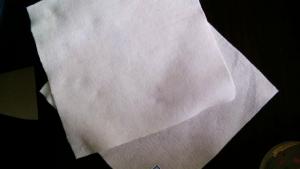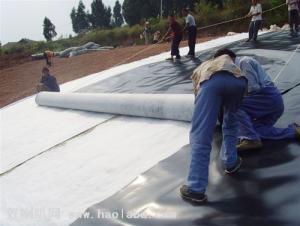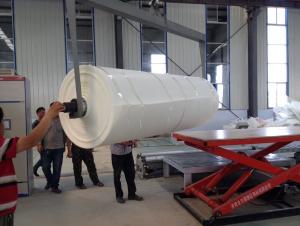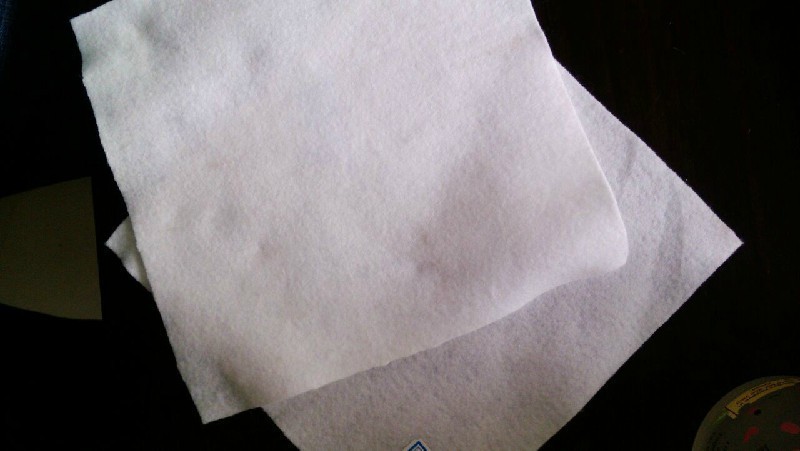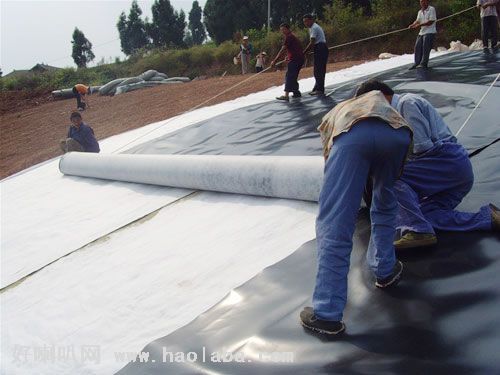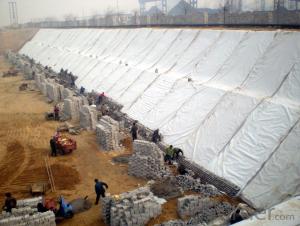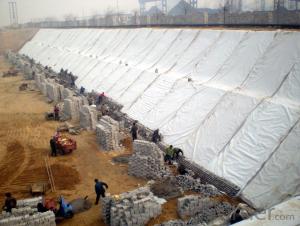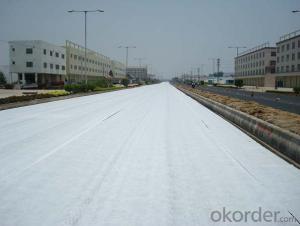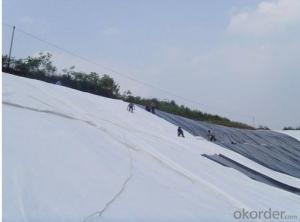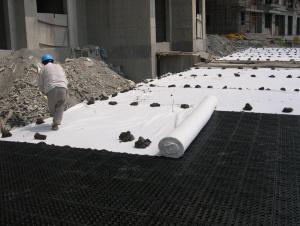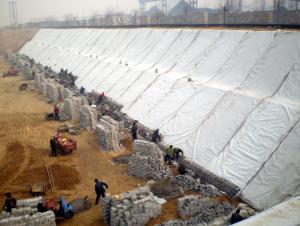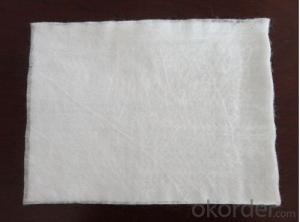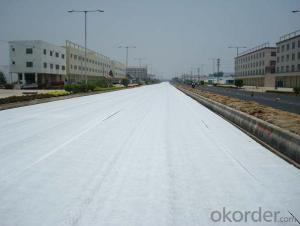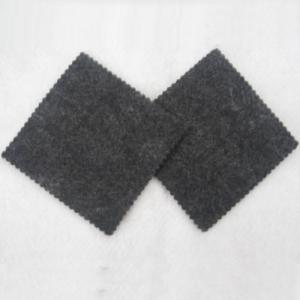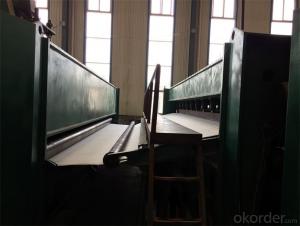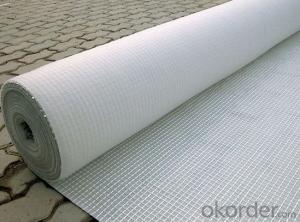Geotextile Paper - Single or Double Sided Thermoforming Nonwoven Geotextile Product, Adopt PP/PET/PA Fibers
- Loading Port:
- Tianjin
- Payment Terms:
- TT OR LC
- Min Order Qty:
- 1000 m²
- Supply Capability:
- 500000 m²/month
OKorder Service Pledge
OKorder Financial Service
You Might Also Like
Single or double sides thermoformingnonwoven geotextile product, adopt PP/PET/PA etc. Fibers
As the raw material, production process including: Non-woven technique, hotrolling and bonding
Treatment.
Specification of ThermalBonded Non-Woven Geotextile for road railway tunnel canel projects
LOOg/m2 _ 500G/M2
Property of ThermalBonded Non-Woven Geotextile for road railway tunnel canel projects
1. Neat and smooth appearance, high grab strength, low elongation, resist acidand alka
Abrasio n - resistant, good antibacterial property
2. Good hydrophily / water repellency property ( based upon different rawmaterial ), uniform net
Surface, soft and smooth hand feeling
Application ofThermal Bonded Non-Woven Geotextile for road railway tunnel canelprojects
Could be processed to ecological bag and planting bag, applied for highway,railway, dam, river
Bank, landscape etc. Ecological environment protection engineering. Also couldbe used as medi-
Cal sanitation nonwovens material, garment nonwovens material, daily life usenonwovens mate-
Rial, industrial nonwovens material, AG ricultural nonwovens material, nationaldefense use nonwo-
Vens material, etc.
I. Medical and sanitation nonwovens: Operation gown, protection suit,disinfection cloth, respira
Tor and disposable sanitation cloth, etc
2. Home decoration nonwovens: Wall covering fabric, table cloth, bed sheet, bedspreadetc
3. Garment nonwovens: Lining, fusible interlining, flocculus, setting cotton,various synthetic leather
Base cloth, etc
4.1ndustrial nonwovens: Base material, reinforced material, polishing material,filtration material,
Insulating material for roof waterproof coiled material and asphalt shingle,cement packing bag,
Geotextile, cladding cloth, etc
5. Agricultural nonwovens: Crop protection material, seeds breeding fabric,irrigation cloth, heat
Preservation curtain, etc
6. Ecological environment protection nonwovens: Processed to ecological bag andplanting bag,
Applied for highway, railway, dam, river bank, landscape etc. Ecologicalenvironment protection
Engineering
7. Other type nonwovens: Space cotton, heat preservation and sound insulationmaterial, oil sor
Bent mat, cigarette filter tip, tea bag, shoe material, etc
- Q: Is the case, we detect the company now want to engage in expansion (that is, increase the test items), the need for material to do qualification certification. But I have not done before, do not know their own data done unreasonable. Take the data mainly for reference, know the approximate range of the various parameters. Question added: it is best to have data logging source and derivation formula to support the reasonableness of this result, thank you! More
- Hello, can only help you this, do not know useful to you useless factory production geotextile geomembrane drainage board
- Q: How do geotextiles aid in the reduction of liquefaction?
- Geotextiles aid in the reduction of liquefaction by acting as a barrier that prevents the migration of fine particles during the occurrence of liquefaction. This helps in maintaining the soil's stability and increasing its resistance to liquefaction-induced hazards.
- Q: Geotextile above allowed to plant grass?
- Geotextile above the grass To protect the slope, then the direct use of three-dimensional vegetation network can not Well! User name is the manufacturer phone! The The
- Q: What are the applications of geotextiles in coastal engineering?
- Geotextiles have various applications in coastal engineering, including erosion control, shoreline stabilization, and beach nourishment. They are commonly used to prevent soil erosion by acting as a barrier against wave action and currents. Geotextiles can also be employed in the construction of revetments, breakwaters, and groins to enhance coastal protection. Additionally, they facilitate beach nourishment projects by retaining sand and sediment, preventing their erosion and maintaining the shape and stability of beaches.
- Q: How do geotextiles improve the performance of drainage systems?
- Geotextiles improve the performance of drainage systems by providing filtration and separation, preventing the clogging of soil particles and allowing water to flow freely. They also enhance the stability and strength of the system, acting as a reinforcement layer to distribute loads and prevent soil erosion. Additionally, geotextiles can help control the migration of fine particles, increasing the longevity and efficiency of the drainage system.
- Q: How do geotextiles help with separation and stabilization in railroads?
- Geotextiles help with separation and stabilization in railroads by acting as a barrier between the subgrade and the ballast layer, preventing the mixing of materials and maintaining the integrity of the track structure. They also provide reinforcement by distributing loads more evenly, reducing settlement and promoting overall stability.
- Q: How do geotextiles improve the performance of dams?
- Geotextiles improve the performance of dams by providing reinforcement, filtration, and separation functions. They enhance the stability of the dam structure by preventing soil erosion, reducing seepage, and increasing the overall durability. Additionally, geotextiles help in maintaining proper water flow, preventing the clogging of drainage systems, and enhancing the overall efficiency and longevity of the dam.
- Q: Alteration of highway seepage control geotextile is generally placed in what position
- Apply to the grassroots level of water defense, the use of embedded, covered with thickness should not be less than 30CM, soil to be solid, to avoid uneven subsidence, cracks. Lap width should be greater than 15CM.
- Q: How do geotextiles help in slope stabilization?
- Geotextiles help in slope stabilization by providing reinforcement and erosion control. They are placed within the slope to increase its strength, prevent soil movement, and reduce erosion. The geotextiles act as a barrier to retain soil particles while still allowing water to pass through, thus minimizing water-induced damage and promoting vegetation growth. Overall, geotextiles play a crucial role in improving slope stability and reducing the risk of landslides.
- Q: How do geotextiles help with soil reinforcement in soft ground conditions?
- Geotextiles help with soil reinforcement in soft ground conditions by providing a stable and strong layer that distributes the load evenly, preventing soil movement and potential failure. They act as a barrier, improving the overall soil strength and stability while allowing water to pass through, reducing the risk of erosion. Additionally, geotextiles help in the consolidation of soft ground by providing confinement and reducing lateral spreading, thereby improving the overall stability of the soil.
Send your message to us
Geotextile Paper - Single or Double Sided Thermoforming Nonwoven Geotextile Product, Adopt PP/PET/PA Fibers
- Loading Port:
- Tianjin
- Payment Terms:
- TT OR LC
- Min Order Qty:
- 1000 m²
- Supply Capability:
- 500000 m²/month
OKorder Service Pledge
OKorder Financial Service
Similar products
Hot products
Hot Searches
Related keywords
